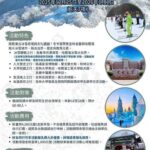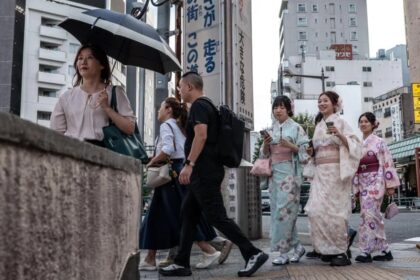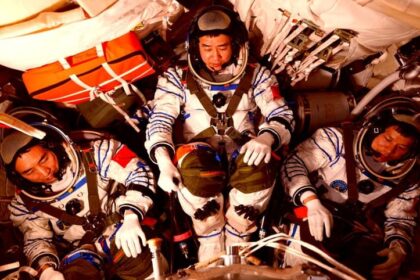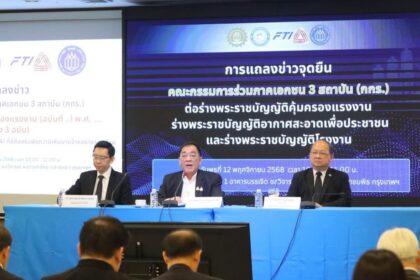A city remaking itself through science
From glass towers to street markets, Hong Kong built its reputation as Asia’s financial crossroads. The city now seeks to add a different identity: a global research hub that can plug international talent into China’s immense scientific machine. At the Hong Kong Laureate Forum, an event linked to the Shaw Prize, laureates and young scientists from many countries gathered to trade ideas and tour labs. The Shaw Prize, created by the media entrepreneur Run Run Shaw, is often described as Asia’s Nobel. City leaders used the occasion to sell a proposition that is simple to understand. Hong Kong can be a low friction gateway to world class equipment, large grants and ambitious projects inside China, while preserving openness and convenience that Western researchers expect.
- A city remaking itself through science
- Why scientists are paying attention
- Geopolitics and new visa rules shape mobility
- Inside Hong Kong’s new labs and programs
- Astronomy and space as a calling card
- From deep sea to AI, collaboration with mainland giants
- Quality, culture, and trust
- Risks, costs, and what may slow the push
- Highlights
Hong Kong’s pitch draws on familiar strengths. Salaries for senior professors can reach about 14,000 dollars per month, top labs are expanding, and travel is simple for many passport holders. Foreign principal investigators describe fewer administrative ceilings than in mainland institutions, including no formal retirement age in many contracts. Visa processing is predictable. Laboratory space is growing in new science parks and on university campuses. The city’s status as a special administrative region offers a legal environment and daily life that feels different from the mainland. For researchers weighing a move, that blend of Chinese scale and international habits is the hook.
The timing also helps. China has become a powerhouse across several fields. The Five hundred meter Aperture Spherical Telescope (FAST) leads radio astronomy by sheer collecting area. The Einstein Probe is supplying high value data in time domain astrophysics. In biology and materials science, expensive platforms are spreading at a pace rare in the West. The country already publishes more papers than the United States, and the gap in quality has narrowed in many areas. Collaborations still run up against cultural differences in lab hierarchy and management. Even so, visiting scholars often find that a paper from Beijing or Shanghai can look indistinguishable from one written in Boston or Berlin.
Why scientists are paying attention
Money, speed and scale sit at the center of the appeal. Senior biologists who work with cryo electron tomography talk about instrument density that would be hard to match elsewhere, from shared facilities to dedicated suites. The chance to order a multi million dollar microscope after a short approval meeting is part anecdote, part signal that procurement can be simpler when a project aligns with national priorities. Several leading labs allow older foreign scientists to keep running groups without age caps, and that extends careers that would be winding down in Europe or the United States. Younger researchers see a different prize, the chance to lead teams early and to define a new institute’s direction.
The talent pool in Hong Kong is deepening as well. Local universities steadily add names to the list of Highly Cited Researchers, a global recognition compiled by Clarivate that tracks the top 1 percent by citations over a decade. Those lists include faculty based at Hong Kong Baptist University, the Hong Kong Polytechnic University and the Hong Kong University of Science and Technology. The signal is imperfect, but it shows momentum. It also shows that the city can attract senior scholars who publish at scale, then train postdocs and students who keep standards high. A quick look at Clarivate’s dashboard gives a sense of where that concentration sits over time. Readers can explore the methodology at Clarivate.
Geopolitics and new visa rules shape mobility
The talent market does not move in a vacuum. Research agencies in the United States have tightened security reviews, and universities now flag Chinese collaborations with unusual scrutiny. Several grant programs restrict work with Chinese partners in sensitive areas, and export control rules complicate the sharing of equipment, data or code. Senior scientists report that laptops and storage devices are sometimes left at home when traveling to China for conferences to avoid compliance issues. In Europe, tougher immigration rules make long research stays harder and slow the flow of students and postdocs. The result is a web of administrative friction that pushes some careers to new destinations.
China has responded by throwing the doors open wider. A new K visa for science and technology workers offers an easier route than older categories and, in some cases, does not require a preexisting job offer. Incentives stack with government grants in fields like artificial intelligence, quantum information, semiconductors and biotech. The country recorded about 711,000 foreign workers in 2023, still a small share of its population but an indicator of growing interest. Hong Kong adds advantages that mainland cities cannot match. English is widely used in labs and classrooms, the internet is more open, legal processes feel familiar to Westerners, and travel links across Asia are excellent. For many, the city becomes a soft landing into the China research system.
Inside Hong Kong’s new labs and programs
Since 2020 the Hong Kong government has put more than 1 billion dollars into a network of new research centers. The portfolio is wide, from neurodegenerative disease to medical engineering. One program is assembling a large biobank aimed at spotting the earliest signals of Alzheimer’s disease years before symptoms appear. The promise is that better biomarkers can pull diagnosis forward and open a larger window for prevention. That kind of high risk, long horizon project needs sustained funding, and Hong Kong’s leaders want to be judged on outcomes that are measurable in patient care, not only on paper output.
Robotics draws a similar push. Teams are building surgical robots designed for minimally invasive procedures and for remote collaboration, so that a specialist in Hong Kong can work in real time with colleagues in Shanghai or London. Materials and control systems are being refined on the assumption that cross border medicine will grow. Another group is testing tiny devices that behave like nanorobots to break up arterial clots, with animal studies already completed and the next stage aimed at safety. Traditional Chinese medicine sits in a modern pipeline here, with chemists and clinicians taking purified compounds through preclinical validation and toward approvals by global regulators.
Program leaders have started to frame the sales pitch in plain language. Cheng Shuk Han, who directs a major research and development center in the city, described the invitation this way.
‘Besides finance and dim sum, we do excellent science. Our message is for everyone, regardless of nationality: if you’re good, come.’
The message is aimed at senior investigators with strong track records and at younger scientists who want to run trials, deploy instruments and publish without long delays. It also signals a willingness to recruit globally rather than compete only within the Greater Bay Area. Several institutes are now led by foreign born experts who split time between Hong Kong and partner labs abroad.
Astronomy and space as a calling card
Space science plays an outsized role in the city’s narrative. The University of Hong Kong recently launched the Hong Kong Institute for Astronomy and Astrophysics, led by the astronomer Bing Zhang, who moved from the United States to take up the post. The institute will add faculty, open a purpose built facility in 2026 and link local groups to major missions. Researchers in Hong Kong have access to all Chinese telescopes, including those involved in international agreements. Several are already writing design inputs for future missions.
Instrument building is gaining pace. A team at the Chinese University of Hong Kong built a sub millimeter polarimeter camera to study star formation and is working with the Greenland telescope on joint observations. The same group is advancing a project known as AMASE D to create cost effective spectroscopy instruments that can map the interstellar medium in the Milky Way and nearby galaxies. Philanthropy from the Hong Kong Jockey Club supports STEM education and helps finance these tools. The goal is to carve out niches that complement China’s massive platforms such as FAST, while giving local students and engineers a route into space science.
From deep sea to AI, collaboration with mainland giants
Partnerships extend beyond the sky. In 2024 the Hong Kong University of Science and Technology hosted a visit by the research vessel Shenhai Yihao and the manned submersible Jiaolong after a Western Pacific expedition. The cruise was part of a deep sea metascience program called Digital Deep sea Typical Habitats (DEPTH), aligned with the United Nations Decade of Ocean Science for Sustainable Development. For the first time the submersible carried international scientists, who collected biological and ecological samples for later work. The visit included open classes that linked students in Hong Kong and Qingdao with researchers at sea, and it came with public forums on marine conservation. The university outlined the program in an HKUST announcement.
HKUST is also deepening work with leading mainland universities. New agreements with Tsinghua University create a joint integrated Master and PhD track in electronic and computer engineering starting in the 2025 to 2026 academic year. Each institution will contribute one million a year in local currency to a joint cross institutional research fund for four years. The programs will back research in artificial intelligence, advanced materials, robotics, energy and environmental science, biomedical science, data science and fintech. An executive education track that blends technology, management and finance will build on earlier programs. These deals add structure to a long running flow of seminars, internships and joint publications.
Quality, culture, and trust
The question of quality comes up in every conversation about this shift. China now produces more research papers than the United States, and the best work competes at the very top. In many areas, peer review and data transparency look similar across continents, even if lab culture can differ. Hierarchies are often stronger in Chinese institutions, with a principal investigator at the center of decisions, while Western labs may be flatter. Hong Kong sits between those models. Universities in the city consistently rank among the global top one hundred. They hire internationally, run graduate programs in English and submit work that holds up in leading journals.
Public support matters too. A large multination survey published in 2025 found that trust in scientists is moderately high across countries, with most people in favor of scientists taking part in policy debates. The authors urged more openness and public engagement to keep that trust resilient. Hong Kong’s science community has taken that idea to heart with open days at labs, bilingual outreach and city wide forums tied to major events. The approach helps explain why officials highlight visibility and education alongside research outputs.
Risks, costs, and what may slow the push
None of this effort is risk free. The national security law imposed after 2019 changed the city’s political climate. University leaders say academic inquiry remains protected, yet some visiting scholars worry about red lines that are not always clear. Export control rules from Western governments limit what software, instruments and data can be shared with Chinese partners. Some funders require formal approvals before their grantees collaborate in China. Even conference travel can bring extra compliance checks. Labs that succeed in this environment spend time on legal review and build policies for data handling, equipment access and remote work.
Hong Kong’s cost of living is another pressure point. Housing is expensive, lab technicians compete with private industry and families face school fees. Institutions have started to adjust packages with housing support and relocation services. Hiring managers also face a delicate balance as they bring in foreign experts while creating opportunities for local graduates. Mainland China has high youth unemployment, yet many sectors still face a shortage of specific skills, which is one reason the talent push targets artificial intelligence, semiconductors and advanced biomedicine. The strategy will be judged by whether it builds teams that last across grant cycles and keeps promising researchers in the city.
Highlights
- Hong Kong is pitching itself as a gateway for Western researchers to access China’s large scale projects, funding and equipment.
- Since 2020 the city has funded more than 1 billion dollars for new centers focused on neurodegeneration, surgical robotics and translational medicine.
- China leads on platforms like FAST, and the quality of research outputs from Chinese groups often matches Western work.
- The University of Hong Kong launched a new institute in astronomy led by Bing Zhang, with a facility planned for 2026 and access to major telescopes.
- HKUST hosted the deep sea vessel Shenhai Yihao and the submersible Jiaolong, part of an international program aligned with the UN Decade of Ocean Science.
- HKUST and Tsinghua signed agreements for a joint Master and PhD track, a research fund and an executive education program spanning AI and other fields.
- New Chinese K visas target global science and tech talent, while US and EU restrictions increase friction in cross border collaboration.
- Research programs in Hong Kong include early Alzheimer’s detection, remote surgical robotics and nanodevices to clear arterial clots.
- A global survey shows steady public trust in scientists, reinforcing the value of outreach and transparency in research.
- Risks include concerns about the national security law, export controls, and high living costs that affect hiring and retention.











